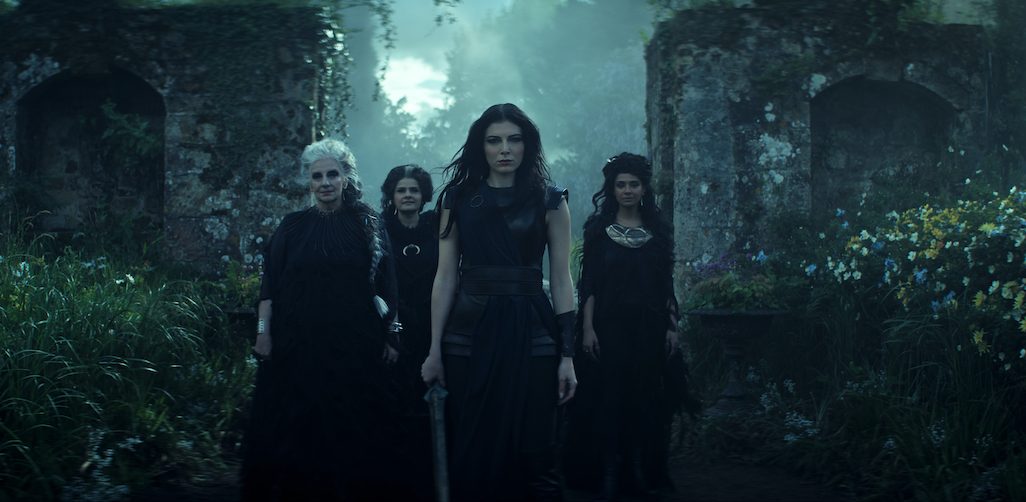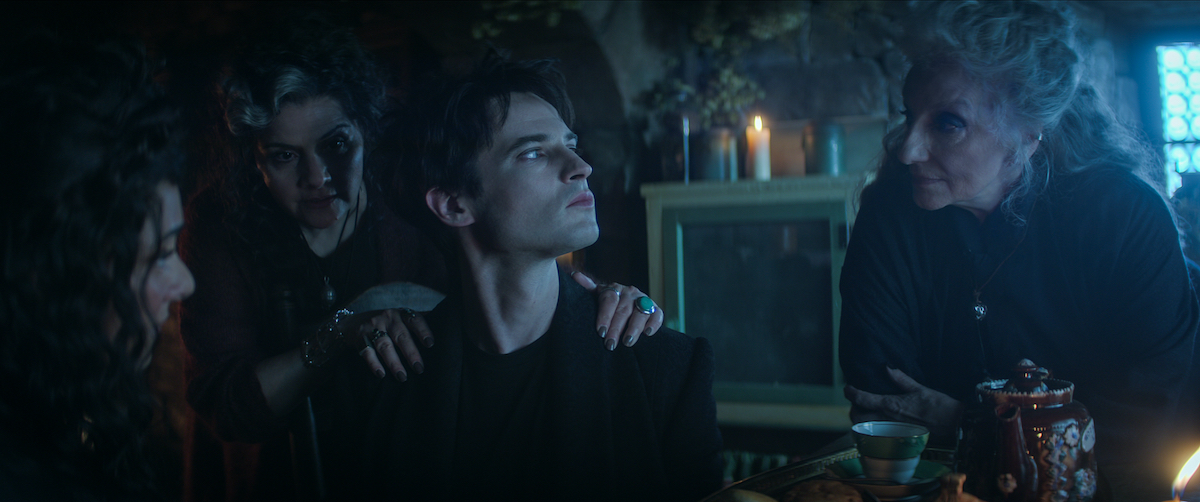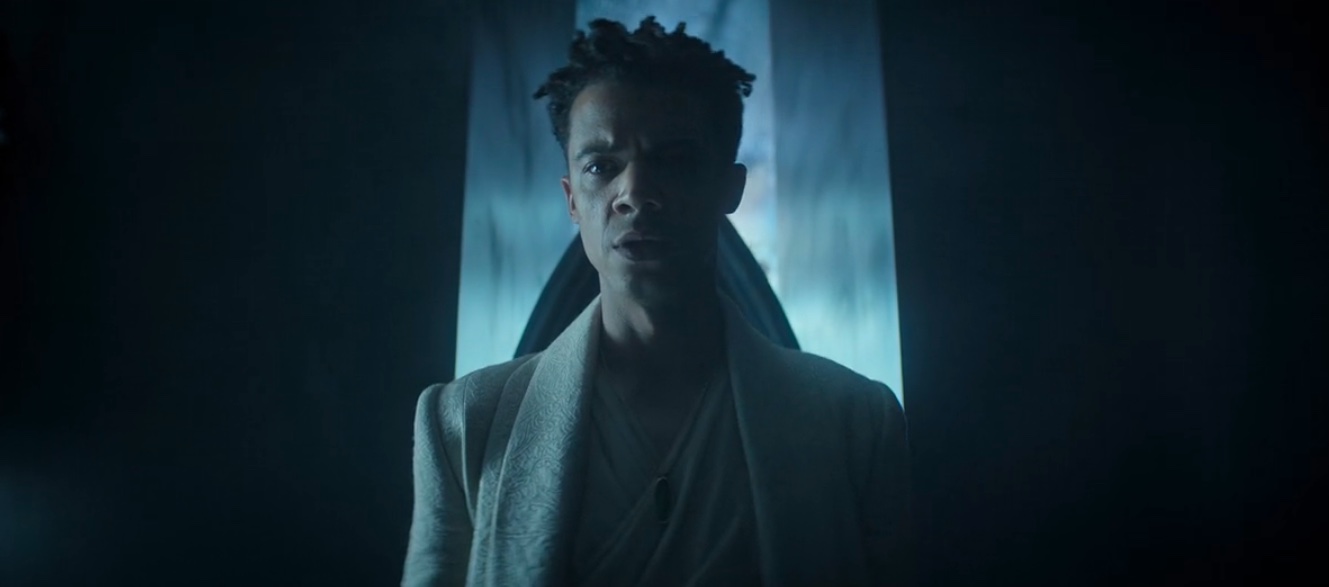The second season of Netflix’s ‘The Sandman’ brings the story of Morpheus, the King of Dreams, to a tragic end. This tragedy, however, had been foretold in the finale of Part 1, where the Kindly Ones snap the yarn out of which they’d knit Morpheus’ story. Part 2 focuses on him trying to accept his impending end, but also hoping that things might turn out differently. While Part 2 wraps up with Morpheus’ death and Daniel Hall taking over the mantle of being the new Dream, it also leaves the audience with a post-credits scene, which adds meaning to the events that unfold over the course of its five episodes.
The Kindly Ones Chat About the Events Involving Dream and Hippolyta Hall
The final episode of the season focuses on the aftermath of Morpheus’ death as a funeral is held for him, while Daniel prepares to meet the family and become one of the Endless. When all is said and done, we find the Kindly Ones, aka the Furies, having tea and talking about all that has transpired. It was clear from their chat about Morpheus’ future that at least two of them didn’t want to kill him, despite him breaking the rule and spilling family blood. Still, a rule is a rule, as Morpheus comes to accept and, using Lyta Hall, they wreak havoc in the Dreaming, eventually leading to Morpheus accepting his death and moving on to the other realm, having been shepherded there by his sister.

While it was their duty to let things happen the way they were preordained, they still seem to be a bit sad about Morpheus’ death. Still, what’s done is done, and the Crone is the first one to point out that every single person involved in this chaos has had to suffer the consequences of their actions. If Morpheus died for spilling blood, Lyta, too, made her bed when she focused all of her anger and rage solely on Morpheus, even though the true kidnappers had been pointed out to her several times. At one point, Mrs. Shore started poking holes in Loki’s theory about the baby being burned to death, but Lyta was too heartbroken to see that there was nothing to actually confirm that her son was gone.
At the end of the day, Lyta was manipulated by Loki, Puck, and even the Kindly Ones to further their schemes. She became a pawn in their games, and in the end, she was the only one who lost the most. Her son is gone, and even though he might now be an immortal, he will never be the child Lyta should have been able to raise. Her need for revenge led her to lose exactly what she was fighting for. And so, since she has “made her bed, and now she must eat it.” The only consolation that she has is that her son hasn’t forgotten her entirely and will continue to be in her life, even if it means she can only see him in her dreams.
The Prophecy in the Fortune Cookie Speaks of the Cyclical Nature of the World
With their tea, the Kindly Ones indulge in a Florentine, a ship’s biscuit, and a fortune cookie. As always, they break the cookie to read the fortune inside it. This time, it is nothing ominous like the time when it spoke of a king forsaking his kingdom and the arrival of a war. This time, it speaks of flowers blossoming in the morning and withering by the evening. These lines are just one part of the poem that originally appears in ‘The Sandman Vol. 9: The Kindly Ones.” The entire poem reads: “All around me darkness gathers; Fading is the sun that shone; We must speak of other matters; You can be me when I’m gone. Flowers gathered in the morning; Afternoon, they blossom on; Still are withered in the evening; You can be me when I’m gone.”

Instead of trying to analyze what it means, the Kindly Ones dismiss it as a poorly written poem. However, their dismissal doesn’t mean that they don’t understand its importance. On the surface, one could say that this is about Morpheus’ death and Daniel replacing him as the new Dream. The first part has the author talking about how they can see the end on the horizon for them, and they are trying to talk to their successor, who will take their place once they have passed. In some ways, Morpheus tries to do it too. When Daniel was born, he knew that he would ultimately have to prepare the boy to take his place within the Dreaming, but he didn’t think that that day would arrive so hastily that Daniel would still be a baby and Morpheus wouldn’t have any time to discuss what it means to have responsibilities of Dream.
The second part, which also appears in the show, gives a more universal touch as it speaks of the certainty of Death. Every flower that has bloomed will wither one day, and in its place, something else will grow. The same holds true for every living being, and in the world of ‘The Sandman,’ even for the immortals. In some sense, these words also apply to the Kindly Ones, who represent the three phases of life in the form of the Maiden, the Mother, and the Crone. The fact that they are not a single entity shows that they are well aware of what it means to accept moving on to the next phase, even if that phase means Death.

These words don’t echo just the events of the second season or hold meaning only in the context of Dream. During Morpheus’ memorial, Despair talks about how there used to be a Despair before her, whom no one has thought about in the past 100,000 years or so. In the same vein, Delirium has also been through a major change, as she originally used to be Delight. This shows that Dream is not the only Endless who must experience the cyclical nature of their existence. And that even Daniel’s arrival doesn’t mean that he is the last Dream. The story goes on as Daniel will forge his own path and destiny, and eventually, there might come a time when he too will wither, paving the way for a new Dream, or something else entirely.


You must be logged in to post a comment.